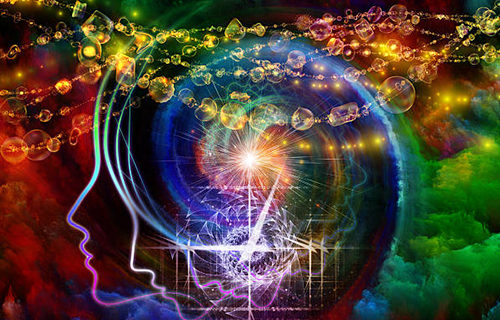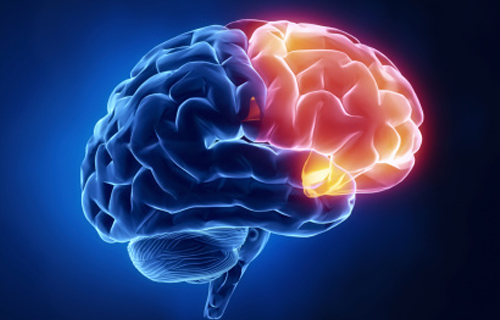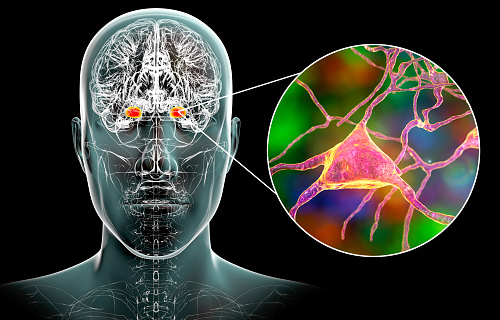
Have you ever thought about Emotion Regulation and Mood Disorders? Emotions are a fundamental aspect of human life, influencing our thoughts, behaviors, and overall well-being. Emotion regulation is modulating and controlling our emotional experiences to meet situational demands. While this ability is critical for adaptive functioning, deficits in emotion regulation can lead to mood disorders such as depression and anxiety. In this article from the neuroscience network, we will explore the Neural Mechanisms of Emotion Regulation and Mood Disorders.
The Prefrontal Cortex and Emotion Regulation
The prefrontal cortex (PFC) is a crucial brain region for emotion regulation and mood disorders. Specifically, the dorsolateral prefrontal cortex (dlPFC) and ventromedial prefrontal cortex (vmPFC) has been implicated in emotion regulation’s cognitive and affective aspects, respectively. The dlPFC is involved in cognitive reappraisal, a strategy where individuals reinterpret the meaning of a stimulus to alter their emotional response.
For example, when faced with a challenging task, one may interpret it as an opportunity to learn rather than a threat to performance. This reinterpretation can reduce negative emotions associated with the study. The vmPFC, on the other hand, is involved in affective reappraisal, where individuals alter the emotional valence of a stimulus through the regulation of affective states. For example, a person may downregulate negative affect by engaging in positive activities such as exercise or socializing.

The Amygdala and Emotion Dysregulation
The amygdala is another critical brain region in emotion regulation and mood disorders. It detects and responds to emotionally salient stimuli, such as threats or rewards. The amygdala can become hyperactive in individuals with mood disorders, leading to heightened emotional responses and difficulty regulating negative affect.
This hyperactivity can be seen in depression and anxiety, where individuals may experience persistent negative emotions and have trouble controlling them. Interestingly, some evidence suggests that the PFC-amygdala circuit may be disrupted in individuals with mood disorders, leading to dysfunctional emotion regulation.

Serotonin and Mood Disorders
Serotonin is a neurotransmitter that has been implicated in mood regulation. Low serotonin levels have been associated with depression, while high serotonin levels have been associated with positive affect. Serotonin is involved in several brain regions, including the PFC, amygdala, and hippocampus.
In the PFC, serotonin is involved in cognitive control and emotion regulation, while in the amygdala, it modulates emotional responses. In the hippocampus, serotonin is involved in regulating stress responses and memory. Interestingly, some medications used to treat depression, such as selective serotonin reuptake inhibitors (SSRIs), work by increasing serotonin levels in the brain.

Neural Plasticity and Emotion Regulation
Neural plasticity refers to the brain’s ability to change and adapt to environmental demands. Emotion regulation is associated with changes in neural plasticity in brain regions involved in emotion regulation. For example, cognitive reappraisal has been associated with increased activity in the dlPFC, which may lead to long-term changes in the structure and function of this region. Similarly, affective reappraisal has been associated with increased activity in the vmPFC, which may lead to changes in the amygdala’s response to emotional stimuli. This suggests that effective emotion regulation may be associated with changes in neural plasticity in key brain regions.

Conclusion
Emotion regulation is a critical aspect of human life essential for adaptive functioning. However, deficits in emotion regulation can lead to mood disorders such as depression and anxiety. The prefrontal cortex, amygdala, and serotonin are key brain regions in emotion regulation and mood disorders. Specifically, the dlPFC and vmPFC in the PFC are involved in cognitive and affective aspects of emotion regulation, respectively.
The amygdala is responsible for detecting and responding to emotionally salient stimuli, and when hyperactive, it can lead to difficulties regulating negative emotions. Serotonin, a neurotransmitter involved in mood regulation, is involved in several brain regions, including the PFC, amygdala, and hippocampus. Finally, neural plasticity plays a crucial role in the brain’s ability to adapt to environmental demands and may be associated with changes in key brain regions involved in emotion regulation.

